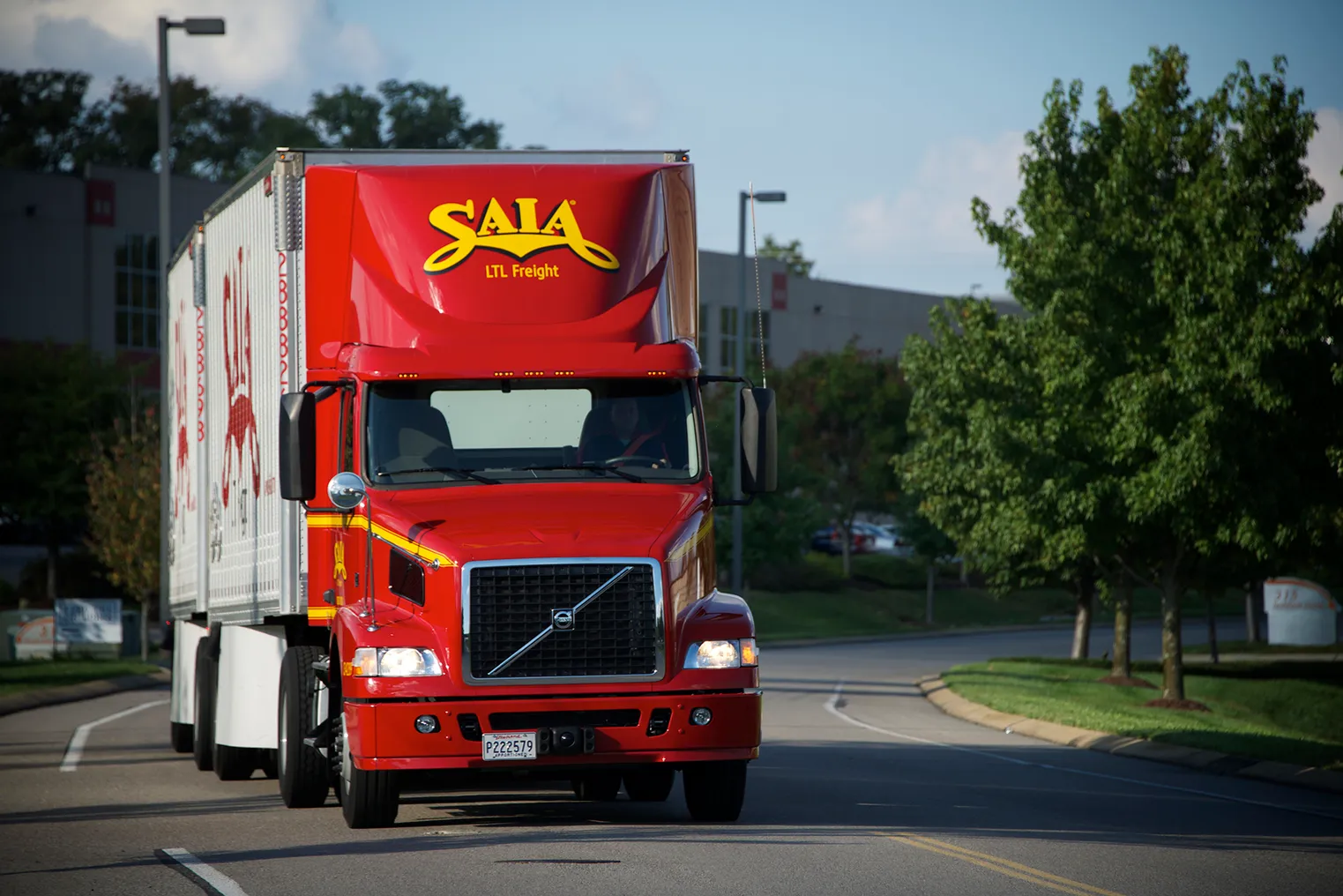
The trucking freight cycle has reached its low point, analysts say
Recent data points to a potential positive transition in the freight cycle, analysts recently said, noting some changes show promise for carriers.
FTR said July 15 that the market has “bottomed out,” following an upswing in trucking and warehouse businesses as well as trucking authority gains.
The firm noted “new applications for transportation and warehousing businesses in June saw their largest increase since August 2022. Coupled with data showing recent gains in new trucking authorities, the data reinforces” its low point assessment.
For dry van spot rates, including fuel, a bottom in pricing appeared to occur in April, Michigan State University interim chair of the school’s Department of Supply Chain Management Jason Miller said in an email.
“I believe spot pricing for dry van is off a bottom, with contract prices either at or very soon at bottom given the lag in adjustment,” he wrote.
A ratio between contract rates and spot rates can also shed light on whether a bear or bull market pricing is occurring. Miller calls this the dry van spot market cycle indicator and calculates it from DAT Freight and Analytics data.
With that ratio, a 10% threshold or below indicates a bull market cycle, while a 15% or higher threshold suggests a bear market kicking in, Miller noted. “July's data is around 16%, suggesting no change is imminent from an uptick standpoint,” he wrote. The threshold had been mostly above 19% from May 2022 through April 2024.
Miller also discussed the issue in a LinkedIn post, saying, “The bad news for carriers is that July’s reading of 15.8% is well away from the 10% threshold. As such, there aren’t signs of the market being ready to turn.”
Following monumental surges in spot and contract rates during the COVID-19 pandemic, a subsequent dropoff in demand has left a drag on operations. That’s meant bankruptcies across the trucking sector along with trucking authority stops that have persisted in negative territory.
That down cycle has also lasted longer than normal. Dry van spot rates have been lower year over year each month for 27 consecutive months, excluding fuel surcharges, according to DAT data.
“Typically it's 19 to 22 months,” DAT Chief of Analytics Ken Adamo said. “Sometimes they stretch to 24, but you know, we're certainly seeing another six to eight months of what you would typically see.”
Positive YoY growth that can sustain for more than a month will help make the case for a turn in the market, Adamo suggested.
Dry van spot and contract rates improve in 2024
“I would look for a quarter of sustained performance above positive,” he said. “I'd love to see it one month positive. I'd really love to see it two months positive. Once it's kind of in that positive territory, or even if it chops up and down, but generally positive for a whole quarter, I'm going to feel a lot better about where we are.”
The downturn has also involved nearly two years worth of negative YoY contract rates.
“The velocity which ... contract rates are coming down has definitely slowed,” Adamo said. “They're tailing spotting rates by a couple months. I wouldn't be surprised if by the holidays, contract rates aren't kind of dead on year over year flat.”
Carriers such as J.B. Hunt Transport Services have faced dwindling profits but reported some signs of optimism earlier this month. Iowa-based Heartland Express posted Q2 earnings on July 30 showing an operating ratio of 99.9%, a tougher operating environment than a year ago, when the company posted a 94.7% operating ratio.
"We continue to believe that the freight market will improve as more capacity exits the market so the industry as a whole can return to more disciplined operating decisions and improved financial results,” Heartland Express CEO, President and Chairman Mike Gerdin said in a Q2 earnings statement. “But, our current expectation of the timing of that favorable change likely extends into 2025.”













